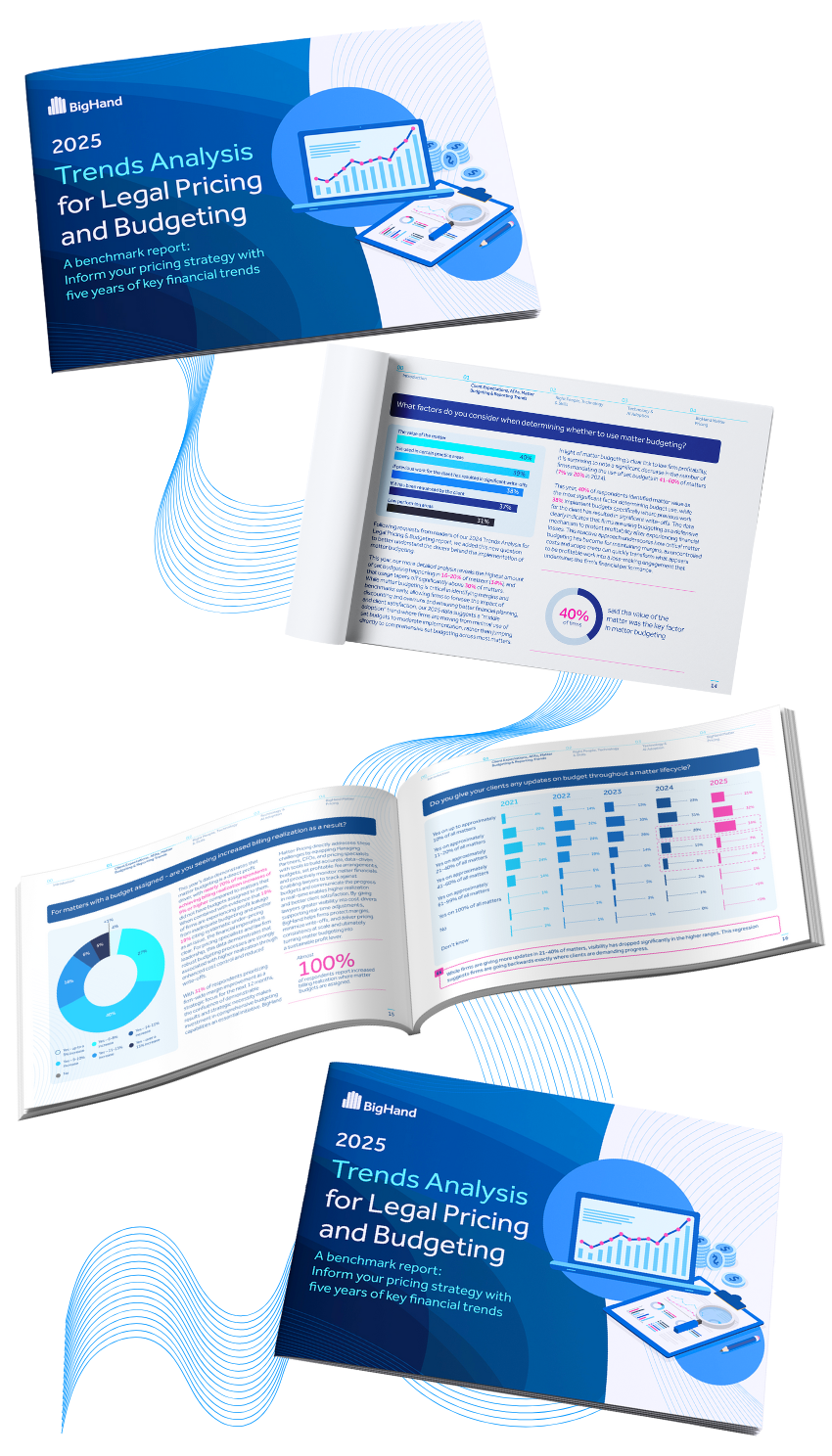Margins are tightening. Clients are demanding greater transparency, more Alternative Fee Arrangements (AFAs), matter budgets, and better reporting. At the same time, AI is changing how legal work is delivered. Without a smarter, more structured approach to legal pricing, a law firm risks:
- Profitability erosion from scope creep and write-offs
- Client churn and weakened trust from a lack of transparency
- Missed opportunities for competitive advantage due to inefficient legal budgeting processes
- Lost credibility by failing to price AI-enabled legal services correctly
What You'll Learn
- How top firms are responding to demands for transparency, AFAs, legal cost forecasting tools, and reporting.
- The impact of matter budgeting on realization rates and profitability
- Why many firms are still relying on manual tools, and where this creates risk
- How AI is reshaping efficiency, and why most firms haven’t updated pricing models to reflect its value
The Bottom Line
Firms that don’t evolve their pricing strategies now will face shrinking margins and weaker client relationships. Legal pricing automations and profitability tracking for law firms aren't optional anymore; they are essential. This report shows where firms are falling behind, the risks of outdated models, and the practical steps leaders can take to protect profitability and client relationships in an AI-driven market.
 50% of firms report rising client demand for financial transparency, but outdated systems and slow adoption of structured legal pricing analytics put both client relationships and revenue at risk. At the same time, attrition in senior roles and underdeveloped pricing strategies are affecting profitability. Discover how structured, transparent pricing practices positively affect client retention and improve margins.
50% of firms report rising client demand for financial transparency, but outdated systems and slow adoption of structured legal pricing analytics put both client relationships and revenue at risk. At the same time, attrition in senior roles and underdeveloped pricing strategies are affecting profitability. Discover how structured, transparent pricing practices positively affect client retention and improve margins. 




 Firms that use matter budgets see a
Firms that use matter budgets see a  34%
34%

